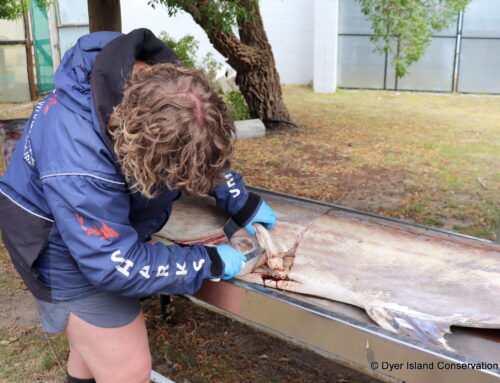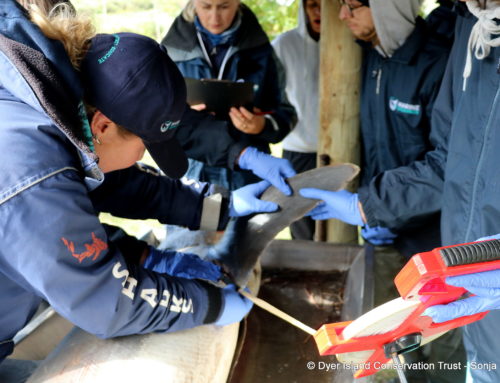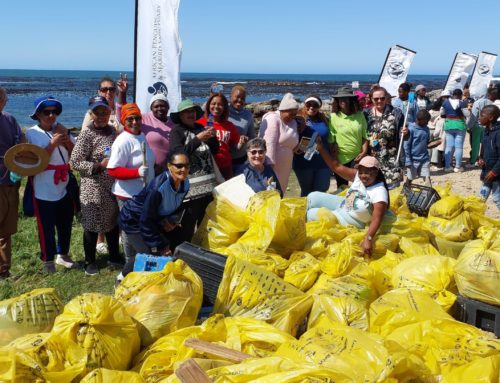Dyer Island Blog #8 ? 06 October 2009
September 05, 2010 by dyertrust
Dyer Island Blog #806 October 2009
Major news the past few weeks in South Africas marine environment was the grounding of the bulk carrier Seli 1 shortly before midnight on Monday 7th September at Blouberg in Cape Town. This 29-year- old Turkish ship was headed for Gibraltar and was carrying 660 tons of fuel and 30 000 tons of coal.
The removal of the fuel began on Friday 11th September, and according to reports, by 20th September, 500 tons of the 600 tons had been removed and the threat of an oil spill was considered over.
The environmental risk that this fuel posed was considerable, given the proximity to Robben Island, a very important breeding area for seabirds (including African penguins and Cape Cormorants to name a few).
This first link takes you to the South African weather services website, where you will be able to see some pictures of the ship and a map showing its proximity to the coast and Robben Island. The second link takes you to the report of the oil spill threat being over. If you would like to read how the story developed, you can click here.
Speaking of all things oil, some of you may have read Blog # 6 titled Dyer Island. It was all about oiling and I made mention of the oil spill that had occurred in Namibia and gave a few details of the African penguin rescue operation underway. Well, Dr Jessica Kemper ,seabird biologist at the Namibian Ministry of Fisheries and Marine Resources has written a wonderfully, heart felt diary of the events that occurred. Click here to read. Dr Kemper has a fabulous; unique style of writing and she provides a humorous yet really touching account of what she; the NMFMR; the Luderitz community and others did to get these oiled birds the treatment they needed. The Namibian government will be proud to have such incredibly dedicated staff. And, with some seabirds in southern Africa facing a seemingly continuous downward population trend, Im so grateful that there are scientists like Dr Kemper at the helm.
As for Dyer Island, oiled African Penguins continue to be caught and sent off for rehabilitation, as are many with seal bite injuries which is cause for concern. Just today I saw an oiled penguin on my rounds but it was too close to the water for me to catch. Very frustrating, and worrying given the consequences if I cant catch it tomorrow.
To end off with for this instalment, a rather sweet story. On my nest rounds last week I came across a nest where previously the adults were incubating two eggs. Ive been interested to see what happens to this nest as it is very late in the season for penguins to be incubating. They should be coming to the end of breeding and preparing for their moult fast. As I checked the nest, it was apparently as I thought what might have happened. There were two dead day old chicks in the nest that had possibly been abandoned by parents who had left for their pre-moult fattening. I collect all the dead specimens I come across for analysis so grabbed my plastic sample bags. However, as I picked up my dead sampleit peeped at me. This little chick was slowly dying of hunger and cold, and I honestly thought it was dead, it certainly looked like that from the way it was lying in the nest. Inspecting its sibling to find it was in a similar state. These two little things brought my monitoring to a complete standstill and we rushed inside the housing area at Dyer, blowing on them to keep them warm. Once inside the house. Now what do we do? The weaker one stopped breathing and the manager, Deon Geldenhuys from CapeNature (www.capenature.org.za) blew in its mouth. After throwing up some green liquid (the chick not the manager), it started breathing again. So to cut a few crazy hours short, we managed to keep the chicks warm, and with a call to Venessa Strauss from SANCCOB, set up a feeding regime. SANCCOB had donated a lamp that we could use to warm chicks up, and so Deon performed some MacGyver trick and set up an incubator for the chicks.
They were 60g when we found them and needed feeding 10% of their body weight every 6 hours. At night when the generator was switched off, they had a hot water bottle, which was changed at 2 am in the morning to make sure it stayed warm. We knew they had survived the night, when around 5 am they were screeching for food. After a few days, we were able to get them to SANCCOB, and the last I heard they were about 120g. Will let you know what happens. Once off the island, Ill post some video clips of the chicks on U-tube.
That’s it for now. Some counts to do tomorrow before the weather turns in the next day or two.




